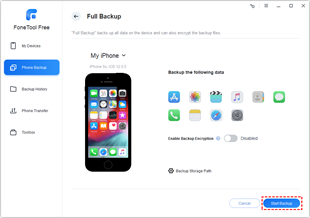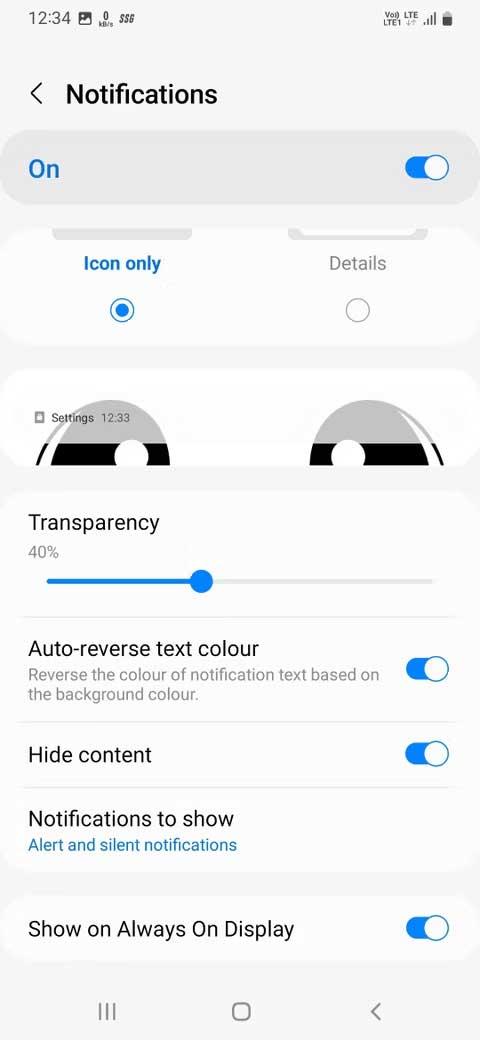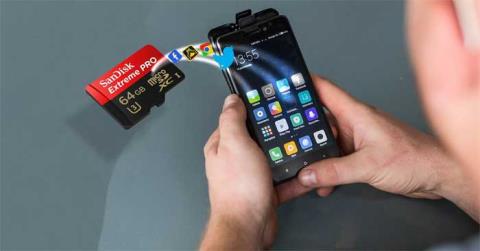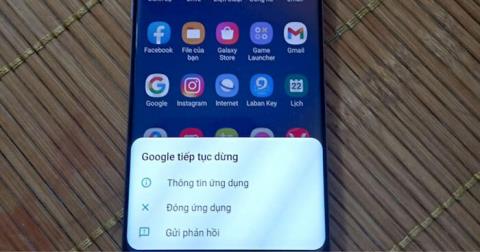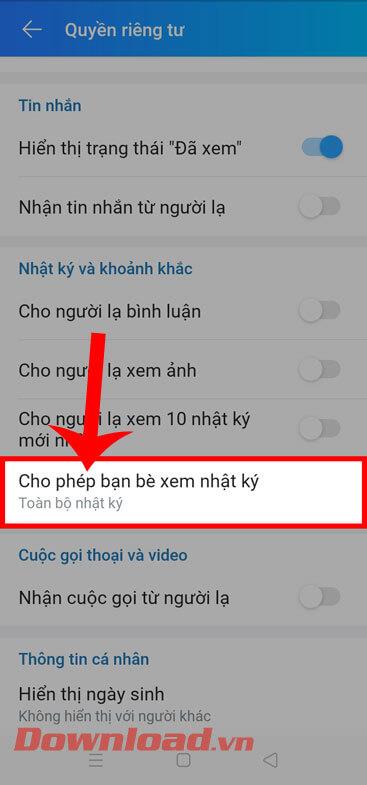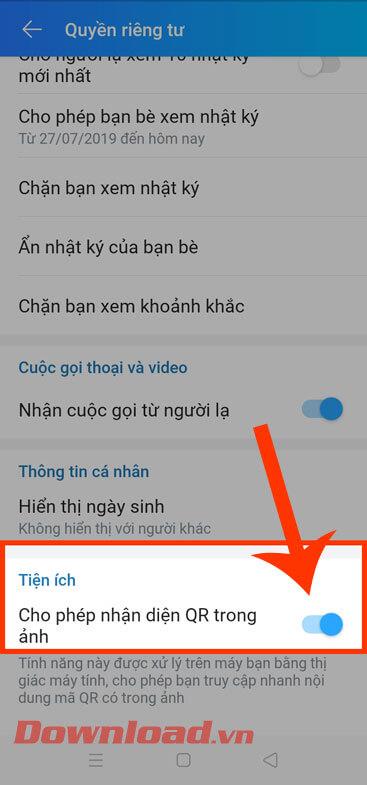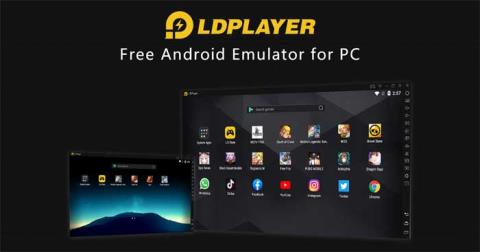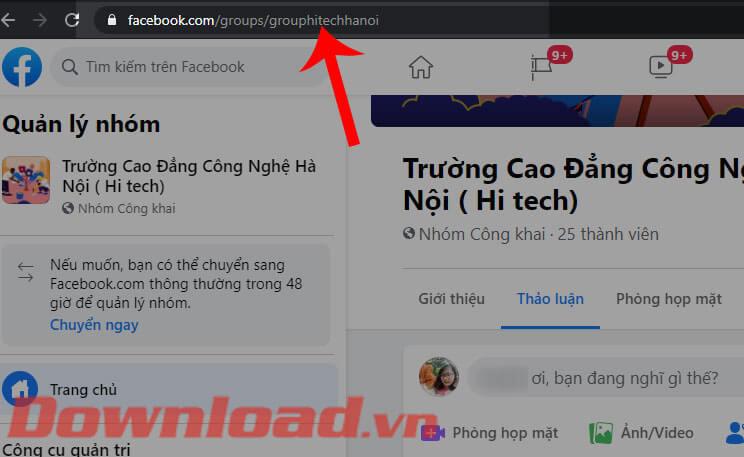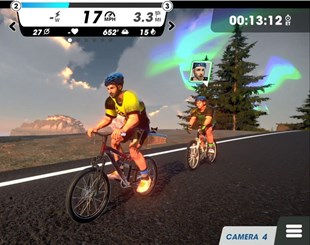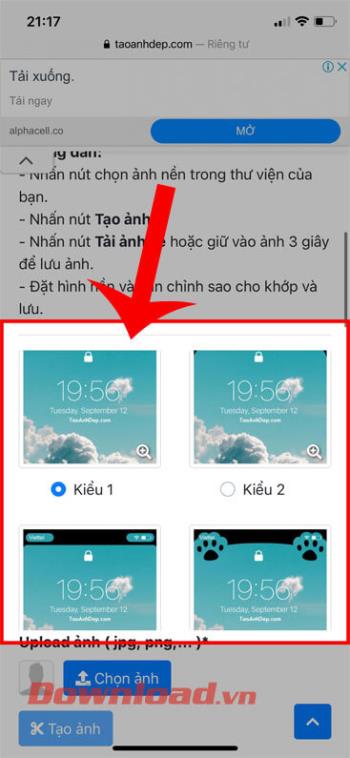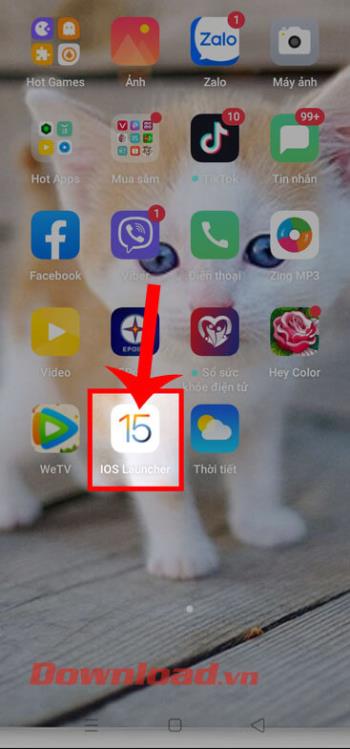USB sticks are not designed to be the same. In the same level, you have the speed difference between USB 2.0 and USB 3.x. But even among similar USB drives, you'll find variations in read and write speeds, and this won't be obvious until you actually use them.
So, what can we do? Please check their speed. The testing process is called benchmarking, which is easy enough for anyone to do. You only need one of the following apps to find out which USB speed is fastest in case you have lots of USB.
1. USB Flash Benchmark
USB Flash Benchmark is the ideal benchmarking tool. It is intuitive and informative. In fact, it is the most specialized testing tool on this list, with 15 tests using sizes ranging from 1 KB to 16 MB, showing you that your USB works like that. Come on in different situations.

USB Flash Benchmark doesn't have any other notable features, which is why it is very lightweight and works well. The results can be uploaded and shared with a link and you can view the results on the website.
2. USBDeview
USBDeview is a free and lightweight application developed by Nir Sofer of NifSoft. Nir Sofer has created over 100 free portable utilities that are all useful and can be downloaded and installed separately or managed through a tool called NirLauncher .
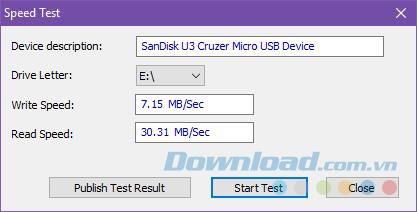
USBDeview can do many things:
- List all connected USB devices.
- List all previously used USB drives.
- Extend manufacturer details to every USB device.
- Enable, disable or uninstall USB devices.
- Run speed test for USB.
The above features may be the reason for you to choose USBDeview over other applications in this list. You can also publicly test results for USB 2.0 and USB 3.0 to compare them.
3. Parkdale
Parkdale is a lesser known tool that lies between the lines of simplicity and complexity based on your choice. QuickAccess is a one-click test with typical parameters, FileAccess is another one-click test with separate method and BlockAccess is a low-level test directly on the drive.
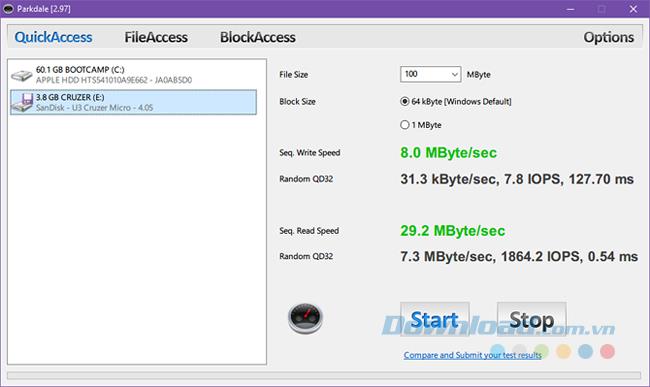
For the purpose of checking the speed of USB, QuickAccess is more than enough. You choose a file size (1 GB by default), block size (64 KB or 1 MB) and then click on Start.
4. Check Flash
Check Flash is one of the advanced testing tools, providing many options and flexibility. It's not difficult to use, but if you really only need a one-click solution, then Cleck Flash is not the ideal tool for you.
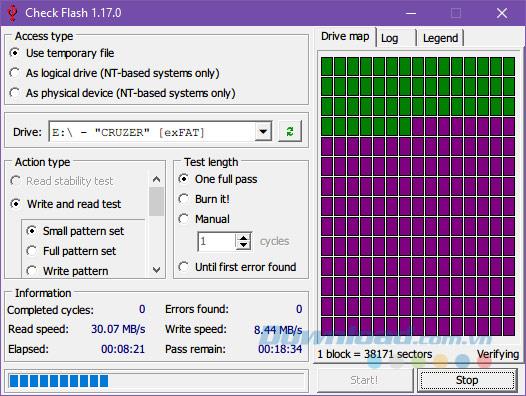
Notable features of Check Flash include:
- Three test modes: temporary file, logical drive and physical drive.
- Many types of tests run when reading and writing speed tests, including small sample sets, full sample sets, sample writing, and sample verification.
- Four length test.
The only downside of this tool is that it takes quite a bit of time.
5. Crystal Disk Mark
As a full benchmarking application, Crystal Disk Mark is created for HDDs and SDDs besides USB. It is one of the most popular applications for its settings, but the tool doesn't provide as much information as some of the other options on the list.
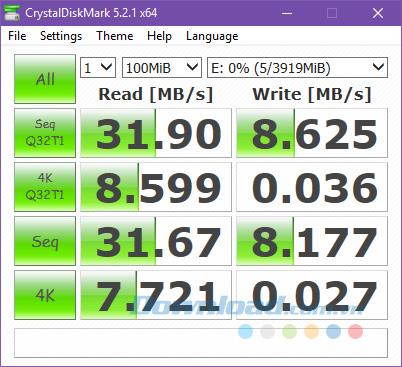
The most notable features of Crystal Disk Mark include:
- Use Microsoft's DiskSpd deployment (open source).
- Four test types: Seq Q32T1, 4K Q32T1, Seq, and 4K.
- Choose from 1 to 9 turns for each test.
- Choose about 50 MB to 32 GB for a test.
- Choose between Random Data and Zero Fill.
So out of the 5 applications mentioned above, which is the most suitable option for you?
